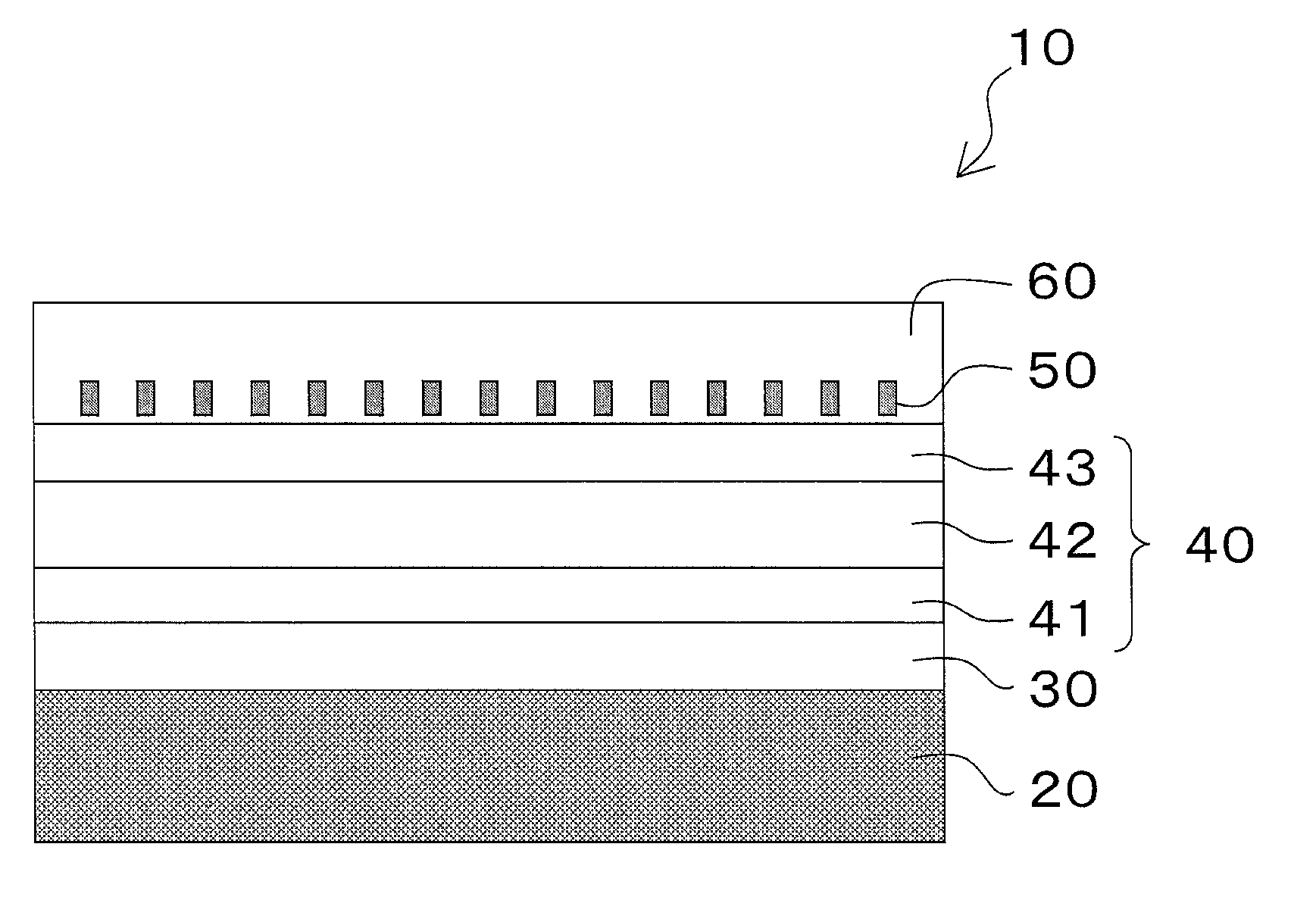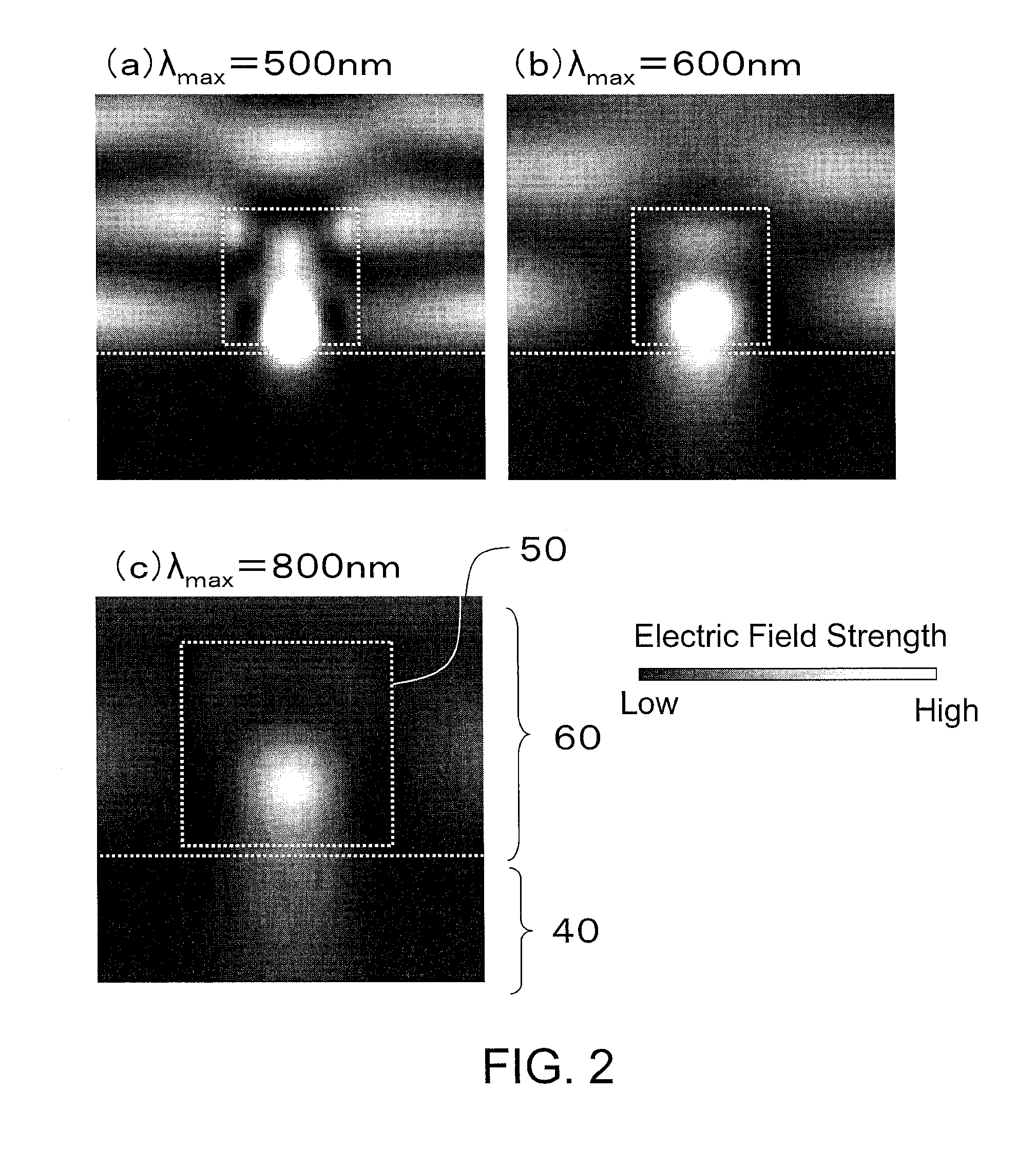Photoelectric conversion device
- Summary
- Abstract
- Description
- Claims
- Application Information
AI Technical Summary
Benefits of technology
Problems solved by technology
Method used
Image
Examples
embodiment 1
[0050]FIG. 1 is a schematic cross sectional view illustrating a configuration of a solar cell according to Embodiment 1 of the present invention. As illustrated in FIG. 1, a solar cell 10 (photoelectric conversion device) according to the present embodiment comprises a substrate 20, a back surface electrode 30, a photoelectric conversion layer 40, minute dielectrics 50 (structures) and a transparent electrode 60. The photoelectric conversion layer 40, the minute dielectrics 50 (structures) form a photoelectric conversion unit.
[0051]The substrate 20 is a thin plate for supporting other components such as the back surface electrode 30 and the photoelectric conversion layer 40. The substrate 20 is formed of a film of glass or resin, for example. Generally, a glass substrate having a thickness of 3 mm to 5 mm is used. Alternatively, a film may be used to give flexibility. The substrate 20 may be nontransparent as being a plate for supporting the photoelectric conversion layer 40 at a si...
modification of
[Modification of Production Method 1]
[0100]When the solar cell according to Embodiment 1 is intended to have a configuration in which the minute dielectrics 50 have a random shape, a step of forming the minute dielectrics 50 by a fine particle preparation method is employed after the step illustrated in FIG. 9 (b) in place of the steps illustrated in FIG. 9 (c) to FIG. 9 (f). Examples of the fine particle preparation method include vapor deposition in a gas and cluster deposition. Thereby, the minute dielectrics 50 having a random shape can be formed on the surface of the transparent electrode 60. The size and the density of the fine particles can be controlled by controlling gas pressure during the preparation. Alternatively, chemically-synthesized fine particles of the minute dielectrics 50 can be dispersed. By employing such a step, the solar cell 10 in which the minute dielectrics 50 have a random shape can be produced in fewer steps and at lower cost.
embodiment 2
[0101]Next, a solar cell according to Embodiment 2 will be described. The solar cell of Embodiment 1 has one photoelectric conversion unit (photoelectric conversion layer 40 and minute dielectrics 50). On the other hand, when a solar cell has a plurality of photoelectric conversion units and the photoelectric conversion units have different maximal sensitivity wavelengths λmax (when a configuration of a so-called tandem solar cell or a so-called multi-junction solar cell is employed), it is possible to achieve a more enhanced photoelectric conversion efficiency of the solar cell. The solar cell according to Embodiment 2 is obtained by applying the above-described configuration of the components including the minute dielectrics 50 to a solar cell having a plurality of photoelectric conversion units. FIG. 10 illustrates the configuration. FIG. 10 is a schematic cross sectional view illustrating the configuration of the solar cell according to Embodiment 2 of the present invention.
[010...
PUM
 Login to View More
Login to View More Abstract
Description
Claims
Application Information
 Login to View More
Login to View More - R&D
- Intellectual Property
- Life Sciences
- Materials
- Tech Scout
- Unparalleled Data Quality
- Higher Quality Content
- 60% Fewer Hallucinations
Browse by: Latest US Patents, China's latest patents, Technical Efficacy Thesaurus, Application Domain, Technology Topic, Popular Technical Reports.
© 2025 PatSnap. All rights reserved.Legal|Privacy policy|Modern Slavery Act Transparency Statement|Sitemap|About US| Contact US: help@patsnap.com



